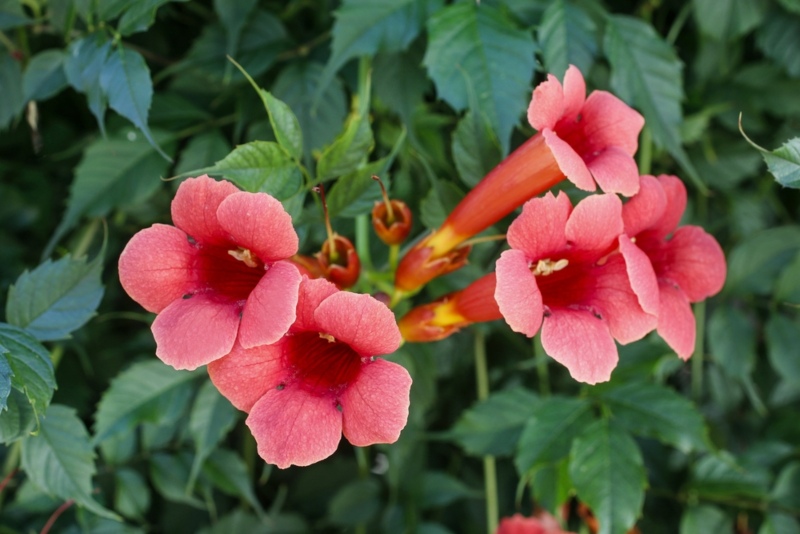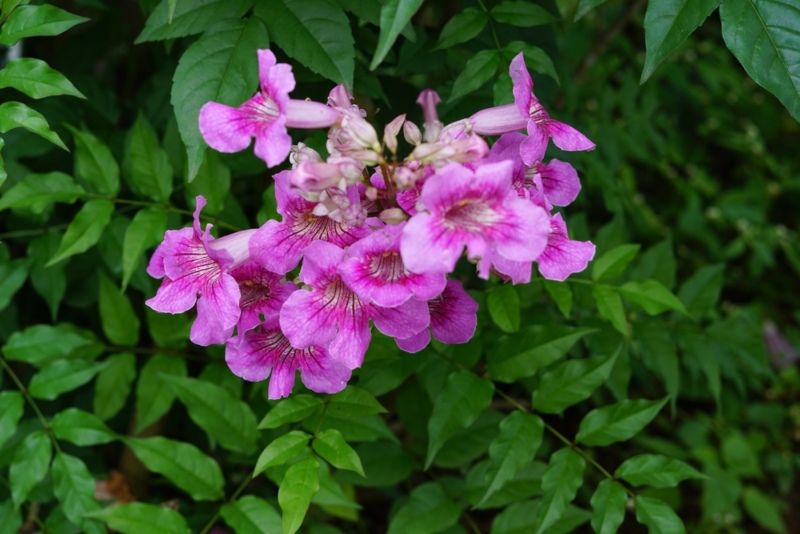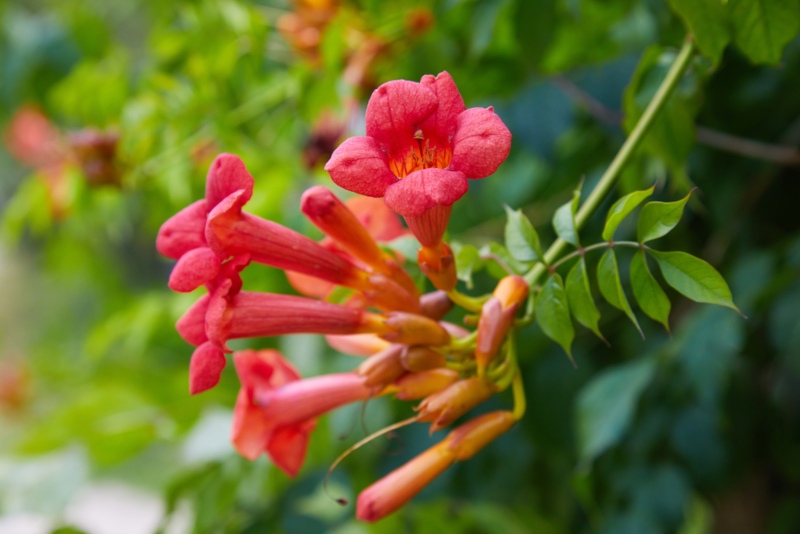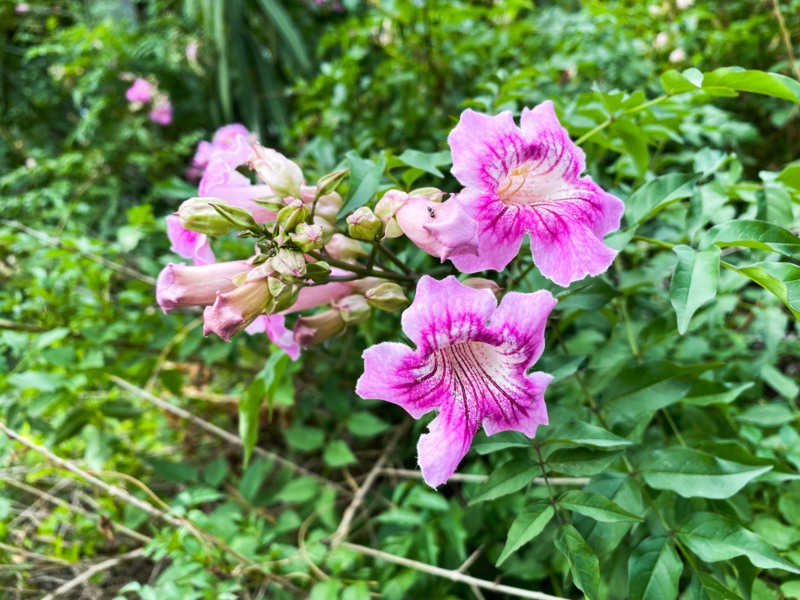Trumpet Vine is a type of fast-growing perennial vine. They are dense, vigorous, multi-stemmed, deciduous, woody, clinging vine that climbs the structures it’s attached to.
The red, orange, and yellow flowers attract hummingbirds, so birdwatchers often plant these colorful vines.

Trumpet Vine species are classified in the Lamiales and Bignoniaceae families, native to the eastern and southern United States and Ontario, Canada.
Trumpet Vine appears after several months of warm weather, so the bloom time is during the summer.
The Trumpet Vine produces trumpet-shaped flowers, covering a fence or wall in beautiful orange blossoms. The flowers rest on the shrubs that climb by aerial rootlets to cover entire surface areas in clusters of growth.
| Botanical Name: | Campsis radicans |
| Common Name(s): | Trumpet vine, trumpet creeper, Cow itch vine, hummingbird vine. |
| Plant Type: | Vine |
| Mature Size: | 25-40 feet long, 5-10 feet wide |
| Sun Exposure: | Full Sun, Partial Shade |
| Water Needs: | Once per week, more in hot weather |
| Soil Type: | Well-drained |
| Soil pH: | Acidic, Neutral |
| Bloom Time: | Summer (July to August) |
| Maintenance: | High |
| Hardiness Zones: | 4-9 (USDA) |
| Toxicity: | Toxic to people and animals |
Trumpet Vine Care
Selecting healthy nursery plants and planting in the early spring through late summer give the best outcomes for the Trumpet Vines. SFGATE recommends rock walls or sturdy fences, providing the vines with a direction to grow throughout the spring and summer months. These support structures benefit other plant life. Avoid planting the vines around trees and other plants since they tend to wrap around and strangle other plants.

Light
The trumpet vine grows best in full sun in the garden, requiring at least six hours of direct sunlight. However, they can thrive in partial shade as well, though the blooms are fewer.
Water
Water requirements for the trumpet vine are minimal. Plant your trumpet vine in an area that drains well. Avoid places where puddles linger after rainfall, or you risk drowning the vines.
Temperature and Humidity
Trumpet Vines prefer hot and humid weather. Less humid climates won’t produce the same vigorous growth.

Soil
Good soil drainage ensures the best growth for Trumpet Vines, though they can tolerate a wide range of soil types, including clay soils. Trumpet Vines can even prosper in poor soil and are drought tolerant.
Fertilizer
Trumpet Vines are aggressive growers and need no supplemental fertilizers. Natural fertilizers can be sprinkled around the vine bases a few times a year to encourage more vigorous growth.
Are Trumpet Vines Toxic?
Trumpet Vines are poisonous to most animals, especially dogs and cats. For humans, any interaction with the sap causes skin rashes. The vine itself is also toxic to humans, and the seeds cause stomach issues.
Potting and Re-potting Trumpet Vines
Trumpet Vines proliferate in a short amount of time, so cultivation in a pot isn’t the most efficient way to grow.
Trumpet vines can reach a size of 30-40 feet in a single season, so keeping them outdoors and away from other plants and trees keeps them safe with the ability to grow at a rapid pace. Potting of trumpet vines after propagating ensures the best indoor use.
Propagated trumpet vines need less sunlight and more shade to grow successfully, which makes indoor potting trumpet vines easily accessible.

Propagating Trumpet Vines
On their own, Trumpet Vines can spread quickly. Seed cutting is one way of propagating Trumpet Vines. Once the seed pods turn brown and split open, you can harvest the seeds and plant them in a garden.
Cuttings need moist soil and shade. Once planted, the cuttings take about a month to root. Propagating from cuttings is best done in the summer, contrary to digging up suckers and shoots, which is done in late winter or early spring. Propagating suckers with roots 3-4 inches can be planted in pots for less aggressive growth of the vines.
Deadheading and Pruning Trumpet Vines
Clipping or ‘deadheading’ Trumpet Vine flower pods will keep this aggressive creeper vine from reseeding in your garden. Trumpet Vines can handle aggressive pruning. Before the beginning of the growing season (around March), prune Trumpet Vines back to just a few buds. Pruning is a great way to keep Trumpet Vines from taking over an area.
Gloves should be used when handling the leaves, especially when pruning. Skin rashes and irritation aren’t uncommon for people when handling the leaves.




